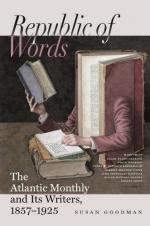So very slight are the points of difference between a good and a bad engine, that they often escape the eye of those whose business it is to deal with such works. It is not the brass and steel and bright metal and elaborate painting that make the really good and serviceable engine,—but the length, breadth, and depth of its furnace, the knowledge of proportion shown in its design, and the mechanical skill exhibited in the fitting of its parts. The apparently complex portions are really very simple in action, while the apparently simple parts are those where the greatest knowledge is required. Any man of ordinary mechanical acquirements can design and arrange the general form,—the whole mass of cranks, pistons, connecting-rods, pumps, and the various levers for working the engine; but to find the correct dimensions of the inner parts of the boiler, and of the valve-gearing, by which the movements of the steam are governed, requires a very considerable knowledge of the chemistry of combustion, of practical geometry, and of the physical properties of steam. So nice, indeed, is the valve-adjustment of the locomotive, as depending upon the work it has to do, whether fast or slow, light or heavy, that a single eighth of an inch too much or too little will so affect its power as to entirely unfit it for doing its duty with any degree of economy.
When a single man takes the general charge of five hundred miles of railroad, upon which the annual pay-roll is a million of dollars, and which employs over two hundred locomotives and three thousand cars, earning five million dollars a year,—a road which cost thirty-three million, has five miles in length of bridges, and over four hundred buildings,—it is plain that the system of operation must be somewhat elaborate. And so it is. Indeed, so complete is the organization and management of employees upon the New York and Erie Railroad, that the General Superintendent at his office can at any moment tell within a mile where each car or engine is, what it is doing, the contents of the car, the consignor and consignee, the time at which it arrives and leaves each station, (the actual time, not the time when it should arrive,) and is thus able to correct all errors almost at the moment of commission, and in reality to completely control the road.
The great regulator upon long lines of railroad is the electric telegraph, which connects all parts of the road, and enables one person to keep, as it were, his eye on the whole road at once.
A single-track railroad, says Mr. McCallum, may be rendered more safe and efficient by a proper use of the telegraph than a double-track railroad without,—as the double-tracks commonly obviate collisions which occur between trains moving in opposite directions, whilst the telegraph may be used effectually in preventing them between trains moving either in opposite directions or in the same direction; and it is a well-established fact, deduced from the history of railroads both in Europe and in this country, that collisions from trains moving in the same direction have proved by far the most fatal and disastrous, and should be the most carefully guarded against.




